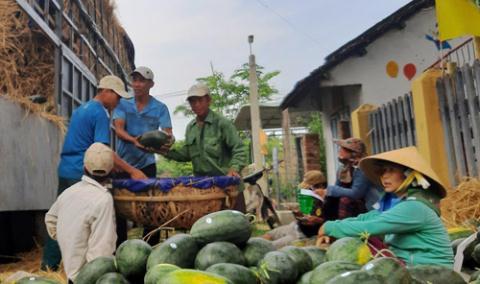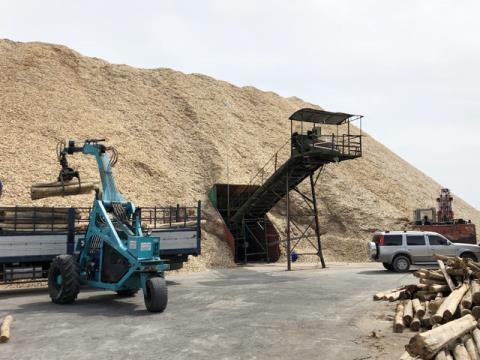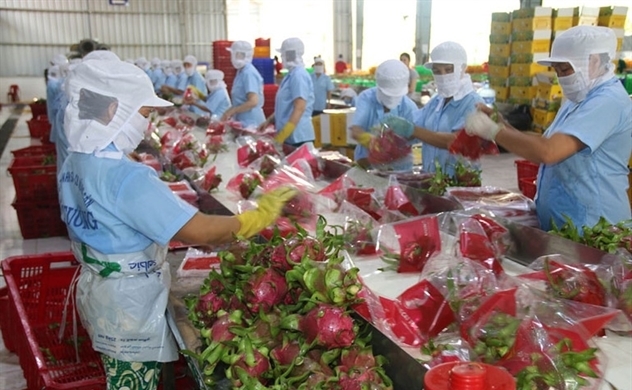- © Copyright of Vietnamnet Global.
- Tel: 024 3772 7988 Fax: (024) 37722734
- Email: [email protected]
chinese market
Update news chinese market
Vietnam struggles to reach rice export plan
 Analysts warn that Vietnam will have to struggle to implement the rice export plan this year because many key markets have tightened control over imports.
Analysts warn that Vietnam will have to struggle to implement the rice export plan this year because many key markets have tightened control over imports.
Vietnamese dairy producers face big problems
 Coca-Cola's announcement that it will enter the dairy sector will increase pressure on Vietnamese producers.
Coca-Cola's announcement that it will enter the dairy sector will increase pressure on Vietnamese producers.
Vietnam’s veggies and fruits can no longer cross the border to enter China
 Vietnam’s vegetables and fruits are finding it difficult to enter China, but the country continues to import Chinese products in large quantities.
Vietnam’s vegetables and fruits are finding it difficult to enter China, but the country continues to import Chinese products in large quantities.
Farm produce: selling much, but making little profit
 Official reports all show that exports of farm produce have increased sharply since the beginning of the year, but the value is very low.
Official reports all show that exports of farm produce have increased sharply since the beginning of the year, but the value is very low.
Chinese farm produce market choosier, causing concern among exporters
 Vietnam’s businesses have had to change the way of organizing production to satisfy the increasingly high demand from China.
Vietnam’s businesses have had to change the way of organizing production to satisfy the increasingly high demand from China.
Wood chip exports stuck on the way to China
 As the biggest wood chip exporter in the world, Vietnam is facing big difficulties.
As the biggest wood chip exporter in the world, Vietnam is facing big difficulties.
Vietnam's rice exports to China plunge
 Instead of continuing to be an easy-to-be-please rice importer, China has been reducing imports, showing its ambition to become an exporter.
Instead of continuing to be an easy-to-be-please rice importer, China has been reducing imports, showing its ambition to become an exporter.
Vietnam’s rice exports drop, causing big worries
 Over the last 10 years, rice exports have brought $2-3 billion to Vietnam a year. However, they are facing difficulties in nearly all key markets this year.
Over the last 10 years, rice exports have brought $2-3 billion to Vietnam a year. However, they are facing difficulties in nearly all key markets this year.
Vietnam's dairy producers vow to make bigger investments
 It is expected that the average dairy product demand of Vietnamese will increase to 28 liters per annum by 2020.
It is expected that the average dairy product demand of Vietnamese will increase to 28 liters per annum by 2020.
VN’s agricultural products face barriers to enter Chinese market
 Many of Vietnam’s agricultural products – especially rice, vegetables and cassava – have faced barriers preventing their export to China, according to the Ministry of Agriculture and Rural Development.
Many of Vietnam’s agricultural products – especially rice, vegetables and cassava – have faced barriers preventing their export to China, according to the Ministry of Agriculture and Rural Development.
Fruit exports: China changes rules, Vietnam changes strategy
 Vietnam’s fruit exports to China in Q1 decreased by 6.3 percent compared with the same period last year. The door to the biggest export market is narrowing.
Vietnam’s fruit exports to China in Q1 decreased by 6.3 percent compared with the same period last year. The door to the biggest export market is narrowing.
Vietnam’s producers meet difficulties as yuan weakens.
 In an effort to encourage exports in the context of the trade war, the Chinese central bank PBOC has set the yuan/US dollar reference exchange rate at 6.8365 yuan per US dollar, the lowest level since January 2019.
In an effort to encourage exports in the context of the trade war, the Chinese central bank PBOC has set the yuan/US dollar reference exchange rate at 6.8365 yuan per US dollar, the lowest level since January 2019.
Farm exports meet barriers on the way to China
 China has fallen from the No 1 position on the list of Vietnam’s biggest rice export markets into the seventh position. The growth of seafood exports to the market has also slowed down.
China has fallen from the No 1 position on the list of Vietnam’s biggest rice export markets into the seventh position. The growth of seafood exports to the market has also slowed down.
Vietnam urged to use official export channels to China
Vietnamese enterprises need to take the initiative and increase exports through official channels to China as Chinese consumers now demand higher quality products, experts say.
Vietnam, third largest rubber exporter, imports $1 billion of synthetic rubber yearly
Vietnam takes pride as one of the world’s biggest natural rubber exporter, but it still has to spend nearly $1 billion a year to import mostly synthetic rubber products to satisfy domestic production.
Chinese rent land in Laos, change production habits
VietNamNet Bridge - Seventy-five percent of Vietnam’s farm produce is exported to China, but the figure could fall as China grows more of its own food.
Vietnamese dragon fruit farmers worried as Chinese market shrinks
VietNamNet Bridge - China has been expanding the growing area of many kinds of farm produce and has gradually reduced imports from Vietnam.
Businesses aim to export farm produce through official channels to China
VietNamNet Bridge - Vietnamese businesses face high risks when exporting farm produce to China across border gates via unofficial means.
Experts see high risk in Chinese investment in wooden furniture
VietNamNet Bridge - The massive Chinese investment in Vietnam’s wooden furniture manufacturing may put Vietnam at a high risk of anti-dumping lawsuits.
Vietnam suffers as China sets trade barriers on farm produce
VietNamNet Bridge - Since Vietnam heavily relies on China, a major import/export market, it has encountered difficulties as China has tightened cross-border imports and set barriers to Vietnamese farm produce.



















